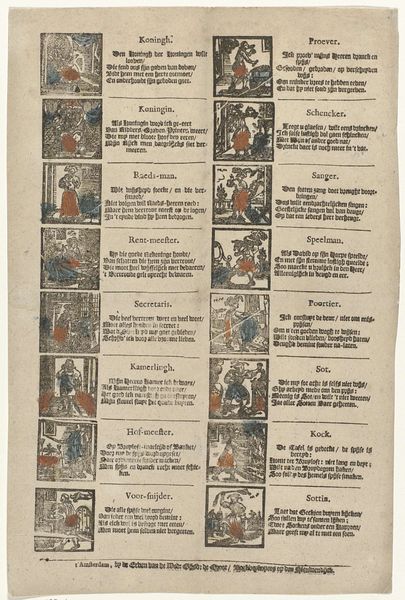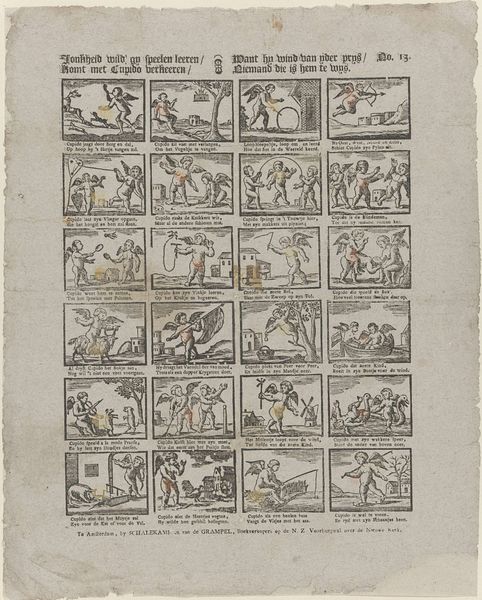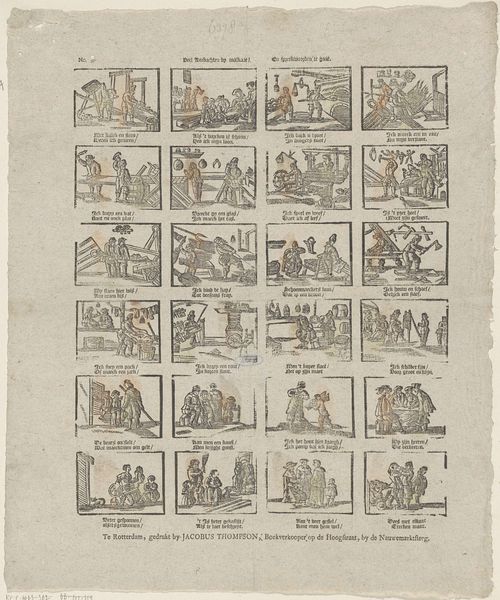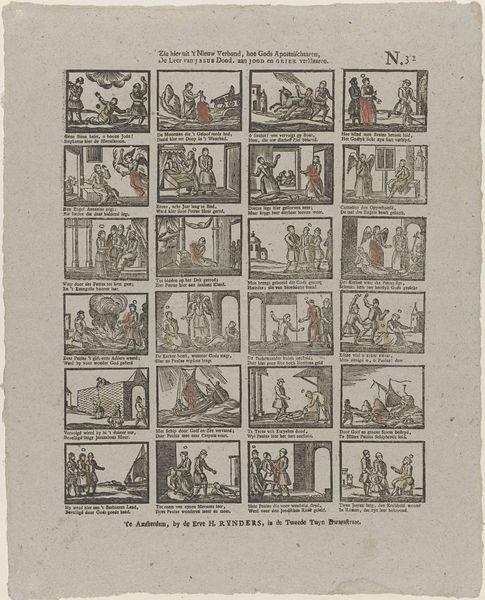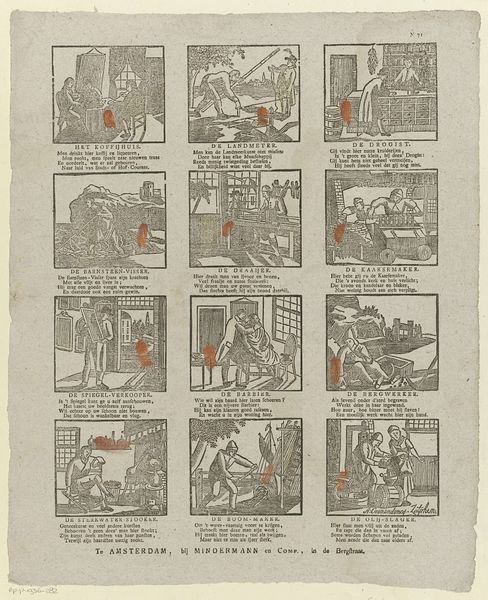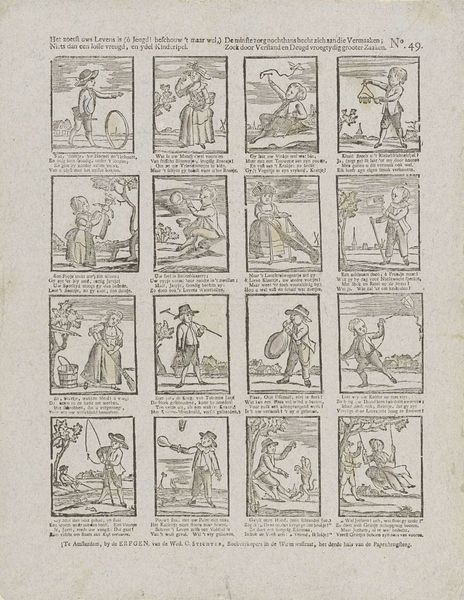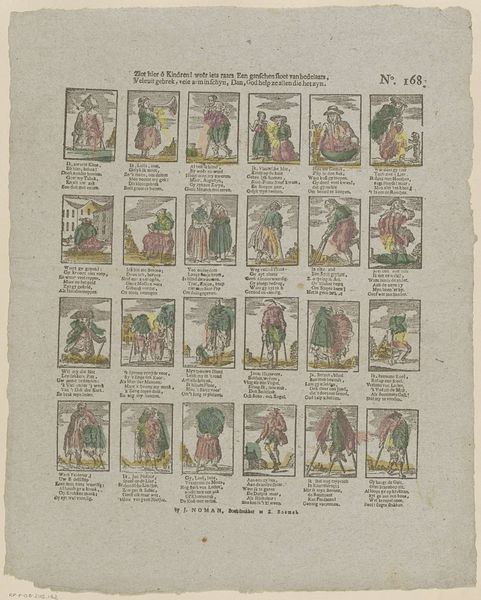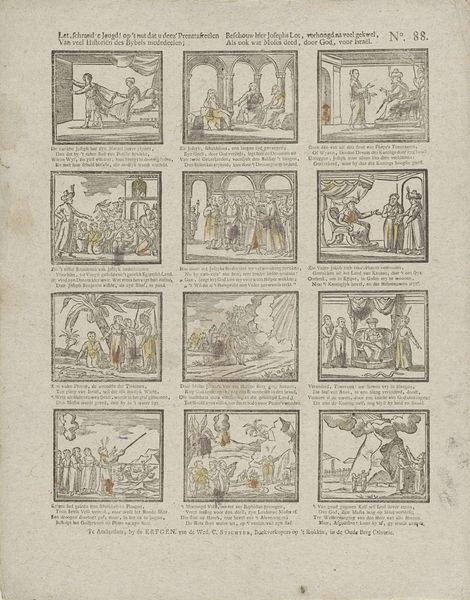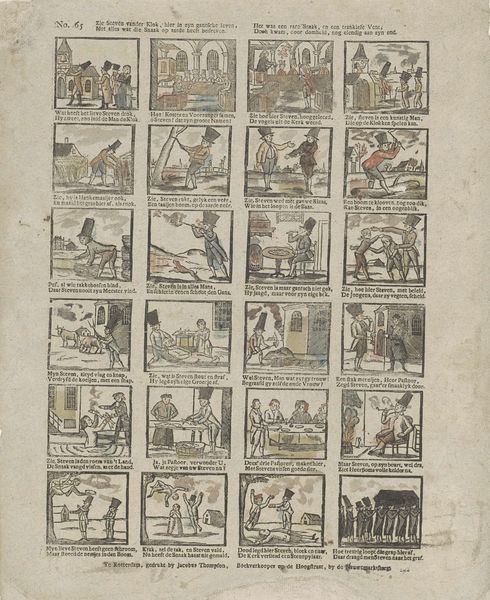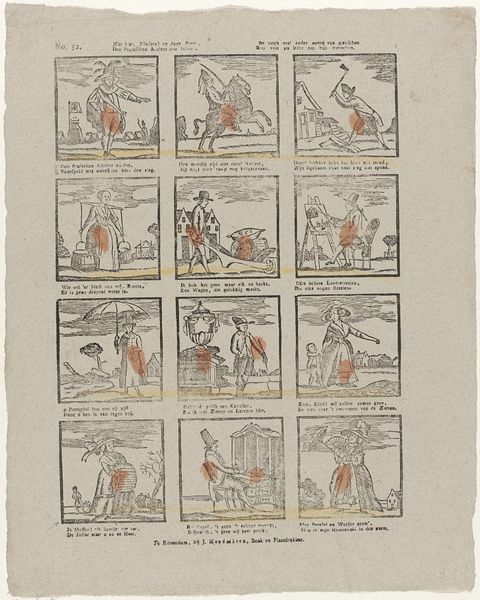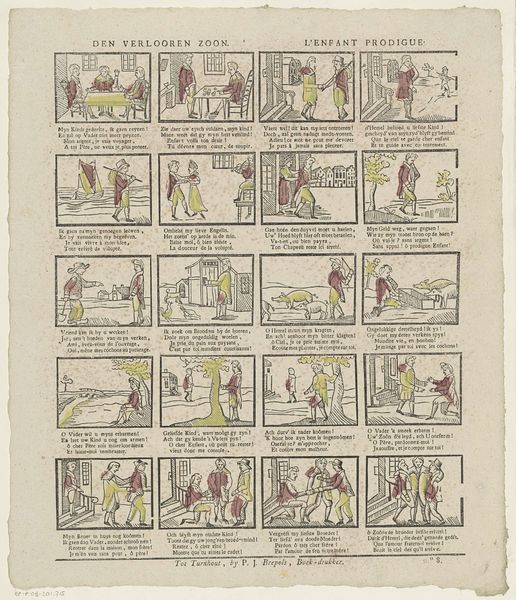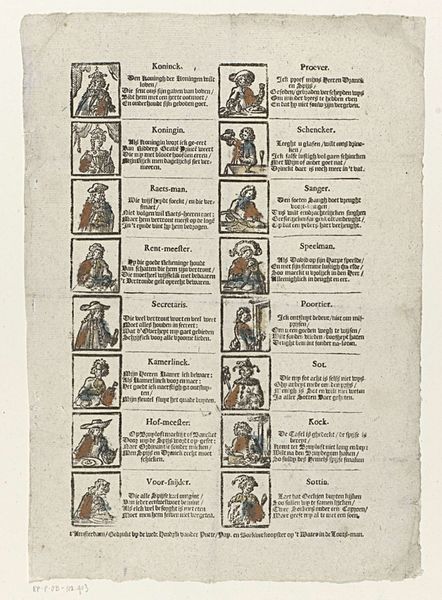
collage, print, textile, woodcut
#
collage
# print
#
textile
#
folk-art
#
woodcut
Dimensions: height 340 mm, width 214 mm
Copyright: Rijks Museum: Open Domain
Curator: Let’s dive into this fascinating piece, "Driekoningenbriefjes," created between 1831 and 1854, currently housed in the Rijksmuseum. It’s a collage using print, textile, and woodcut elements. Editor: It’s fascinating! At first glance, it appears almost like a board game. All these little scenes with text... it's quaint, but also somewhat mysterious. What do you see in this piece beyond just the visual? Curator: This artwork offers a window into the social dynamics and performative aspects of Epiphany celebrations in the Netherlands. Think about folk traditions, where societal roles were temporarily inverted. Who do you think these figures are and what narratives were they performing? Editor: Based on the limited snippets of old Dutch, they look like depictions of different characters, possibly from a play or celebration: "King," "Queen," a cook, even a jester. Would it be correct to say this work portrays some form of hierarchy? Curator: Absolutely! The stratification depicted within isn’t just about representation; it's an active negotiation of power, identity, and gender roles within that society. Notice how different classes might interact during these carnivalesque role reversals. Can you imagine what these brief social upsets might have meant to ordinary people living at the time? Editor: It makes you wonder how they saw their own lives and status being reflected, perhaps even mocked, in these brief moments of upheaval. It must have been very special, despite any implications about social class. Curator: Precisely. It served as a controlled outlet for anxieties and aspirations. The piece’s blend of media, from print to textile, reinforces the integration of different social strata – from the producers of printed matter to those crafting textiles within their homes. Editor: That’s an interesting thought: folk art becomes a method to temporarily negotiate social barriers! Thank you. I’ll be sure to observe folk art and festivals from an intersectional approach from now on! Curator: Indeed. Keep in mind that art, even seemingly simple folk art, carries layered meanings that engage deeply with societal structures.
Comments
No comments
Be the first to comment and join the conversation on the ultimate creative platform.
